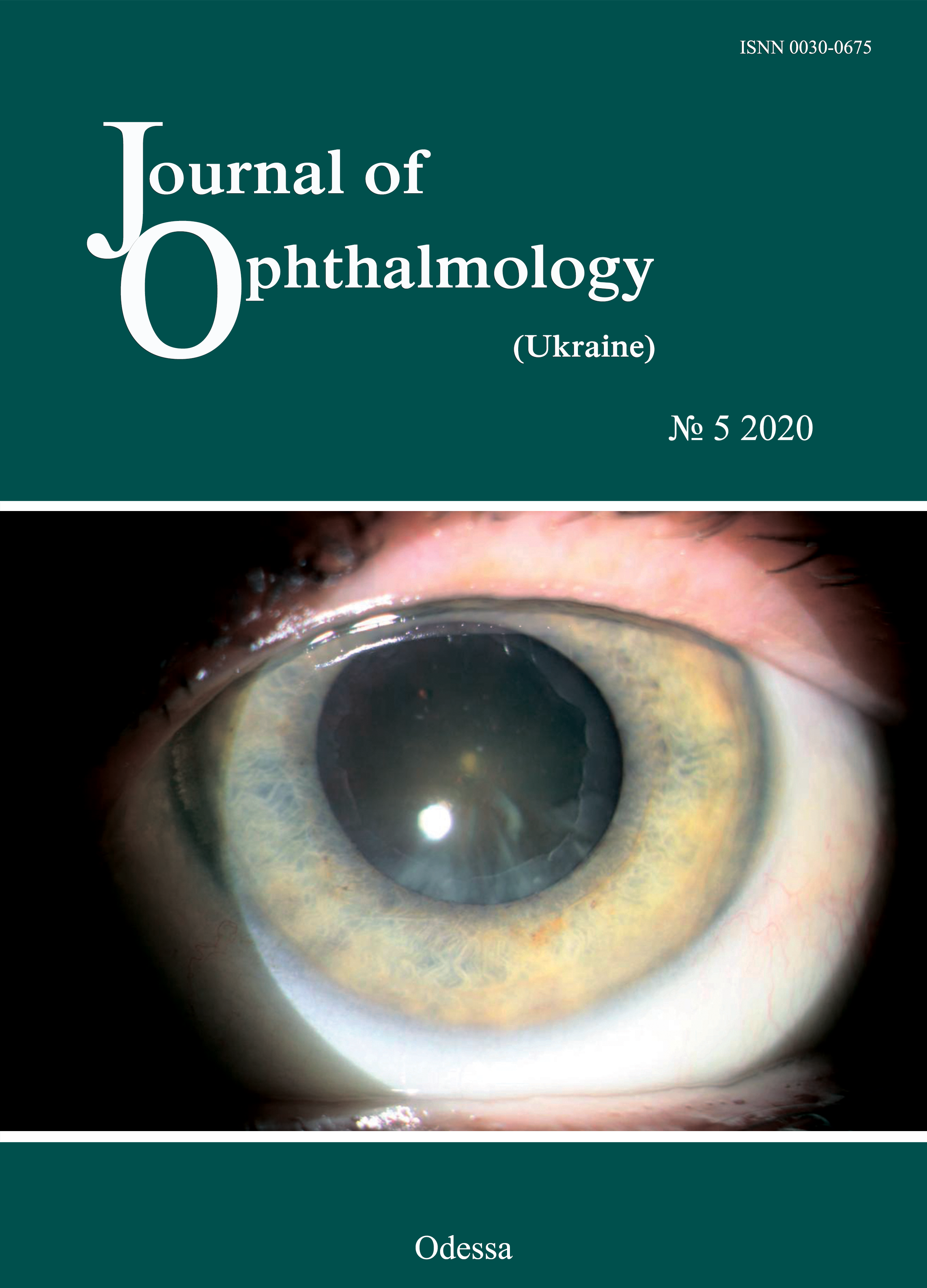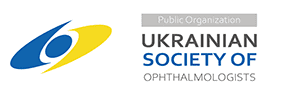Prevalence of non-infectious corneal diseases
DOI:
https://doi.org/10.31288/oftalmolzh202057578Keywords:
non-infectious diseases, cornea, prevalenceAbstract
Purpose: To estimate the prevalence of non-infectious corneal diseases in the city of Baku.
Material and Methods: We retrospectively reviewed databases of the outpatient polyclinics of the city of Baku in which the activities of ophthalmological departments were coordinated by the Acad. Zarifa Aliyeva National Ophthalmology Centre. Non-infectious corneal diseases were diagnosed on the basis of the clinical guidelines established by, and with involvement of specialists and equipment from the Acad. Zarifa Aliyeva National Ophthalmology Centre.
Results: The most common clinical form was foreign body (54.0 ± 1.5 0⁄0000), followed by traumatic corneal erosion (47.7 ± 1.4 0⁄0000) and keratoconus (24.6±1.0 0⁄0000); chemical and thermal burns were less common (6.1 ± 0.5 0⁄0000). The age group of 0-9 years had the least prevalence (63.1 ± 4.3 per 100,000) and the age group of 101-9 years, a more than twice higher prevalence (120.9 ± 7.0 0⁄0000 per 100,000) of total non-infectious corneal diseases. The next two age groups had statistically increased prevalences of these diseases, 152.1 ± 6.1 and 262.5 ±9.2 0⁄0000, respectively.
Conclusion: Estimated prevalence of non-infectious corneal diseases at a population level was 166.9 ± 2.7 0⁄0000, with the most common clinical form being foreign body (54.0 ± 1.5 0⁄0000), followed by traumatic corneal erosion (47.7 ± 1.4 0⁄0000), keratoconus (24.8 ±1.0 0⁄0000), and corneal dystrophy and degeneration (16.1 ± 0.8 0⁄0000). The age group of 60-69 years had the highest prevalence of total non-infectious corneal diseases (275.9 ± 12.6 0⁄0000), and foreign body prevalence was highest in the age group of 40-49 years (117.6 ± 6.2 0⁄0000), the prevalence of corneal dystrophy and degeneration was highest in the age group of 70-79 years (93.2 ± 12.0 0⁄0000), and the prevalence of traumatic corneal erosion was highest in the age group of 60-69 years (130.6 ± 8.7 0⁄0000).
References
1.Collier SA, Gronostaj MP, MacGurn AK, et al. Estimated burden of keratitis - United States, 2010. MMWR Morb Mortal Wkly Rep. 2014 Nov 14; 63(45): 1027-30.
2.Moshetova LK, Nesterov AP, Egorov EA, eds. [Ophthalmology. Clinical recommendations]. GEOTAR-Media: Moscow; 2016. Russian.
3.Li X, Wang L, Dustin L, Wei Q. Age distribution of various corneal diseases in China by histopathological examination of 3112 surgical specimens. Invest Ophthalmol Vis Sci. 2014 May 8;55(5):3022-8. https://doi.org/10.1167/iovs.13-13805
4.Pedrotti E, Demasi C, Bruni E, et al. Prevalence and risk factors of eye diseases in adult patients with obstructive sleep apnoea: results from the SLE.E.P.Y Cohort Study. BMJ Open. 2017; 7(10): e016142.https://doi.org/10.1136/bmjopen-2017-016142
5.Lin Z, Chen J, Cui H. Characteristics of corneal dystrophies: a review from clinical, histological and genetic perspectives. Int J Ophthalmol. 2016; 9(6):904-13.
6.Shehadeh M, Diakonis V, Jalil S, et al. Prevalence of keratoconus among a Palestinian Tertiary student population. Open Ophthalmol J. 2015;9:172-6.https://doi.org/10.2174/1874364101509010172
7.Qu J-H, Li L, Tian L, et al. Epithelial changes with corneal punctate epitheliopathy in type 2 diabetes mellitus and their correlation with time to healing. BMS Ophthalmology. 2018 Jan 4;18(1):1.https://doi.org/10.1186/s12886-017-0645-6
8.Diez-Feijoo E, Grau A, Abusleme E, Duran J. Clinical presentation and causes of recurrent corneal erosion syndrome: review of 100 patients. Cornea. 2014 Jun;33(6):571-5.https://doi.org/10.1097/ICO.0000000000000111
9.Dolzhich RR, Piatnitsyna VV. [A combination technique for treating recurrent corneal erosions]. Problemy oftalmologii. 2008;1:47-8. Russian.
10.Stenton G. [Medical and biological statistics]. Praktika: Moscow; 1999. Russian.
Downloads
Published
How to Cite
Issue
Section
License
Copyright (c) 2025 П. М. Магеррамов

This work is licensed under a Creative Commons Attribution 4.0 International License.
This work is licensed under a Creative Commons Attribution 4.0 International (CC BY 4.0) that allows users to read, download, copy, distribute, print, search, or link to the full texts of the articles, or use them for any other lawful purpose, without asking prior permission from the publisher or the author as long as they cite the source.
COPYRIGHT NOTICE
Authors who publish in this journal agree to the following terms:
- Authors hold copyright immediately after publication of their works and retain publishing rights without any restrictions.
- The copyright commencement date complies the publication date of the issue, where the article is included in.
DEPOSIT POLICY
- Authors are permitted and encouraged to post their work online (e.g., in institutional repositories or on their website) during the editorial process, as it can lead to productive exchanges, as well as earlier and greater citation of published work.
- Authors are able to enter into separate, additional contractual arrangements for the non-exclusive distribution of the journal's published version of the work with an acknowledgement of its initial publication in this journal.
- Post-print (post-refereeing manuscript version) and publisher's PDF-version self-archiving is allowed.
- Archiving the pre-print (pre-refereeing manuscript version) not allowed.












